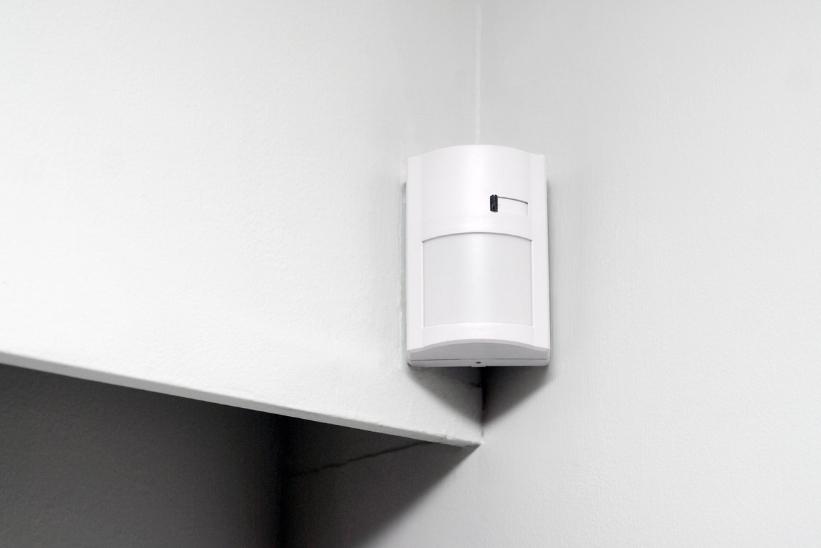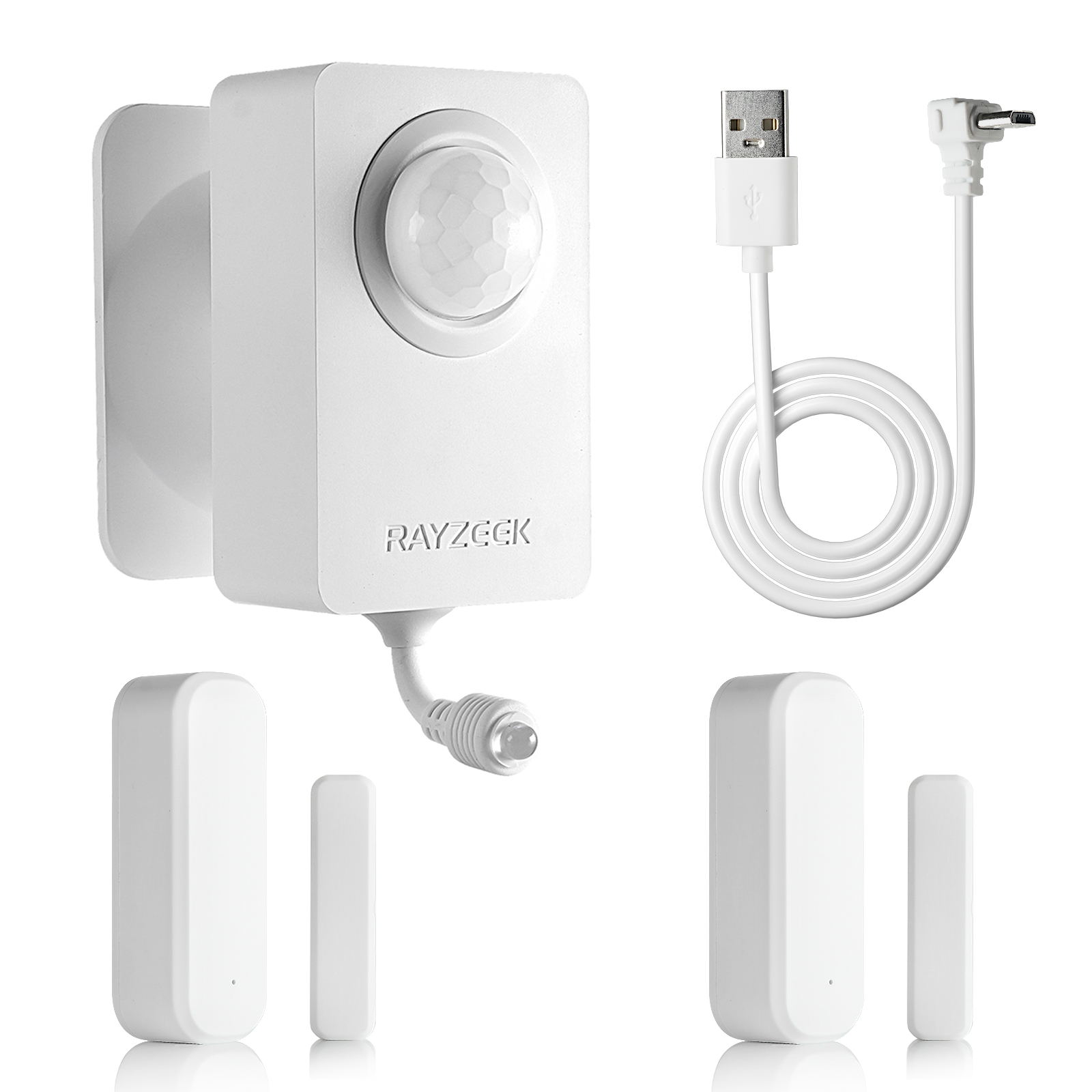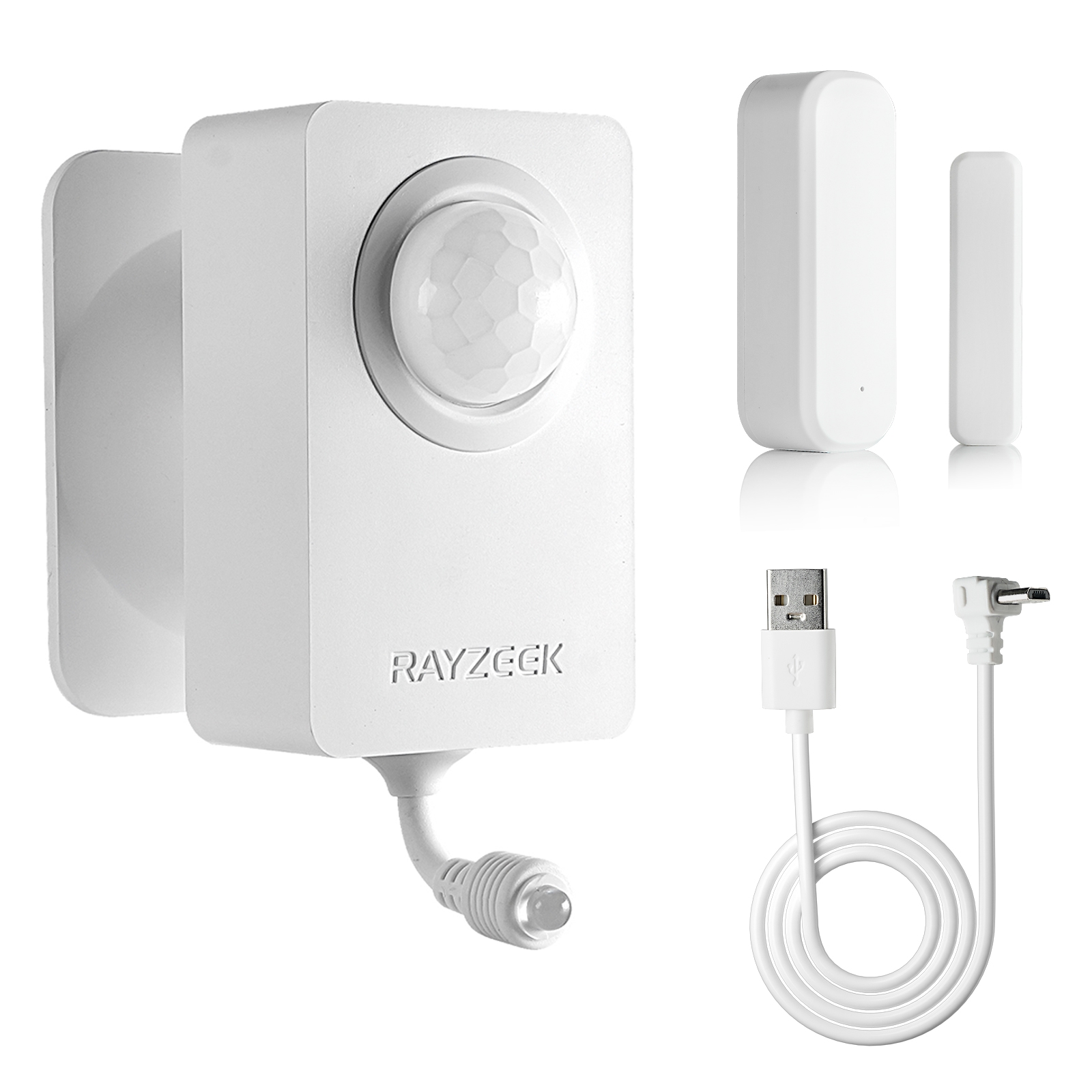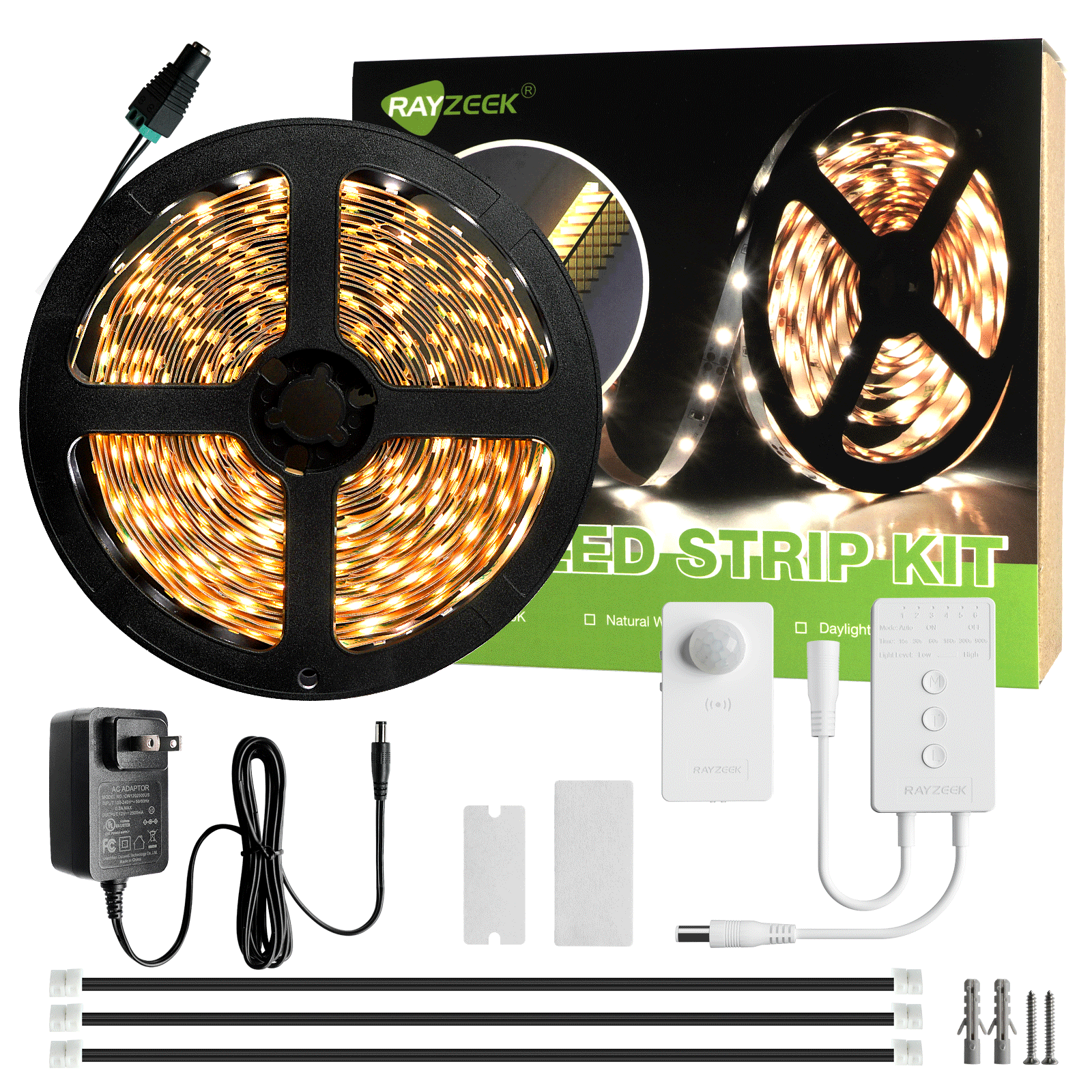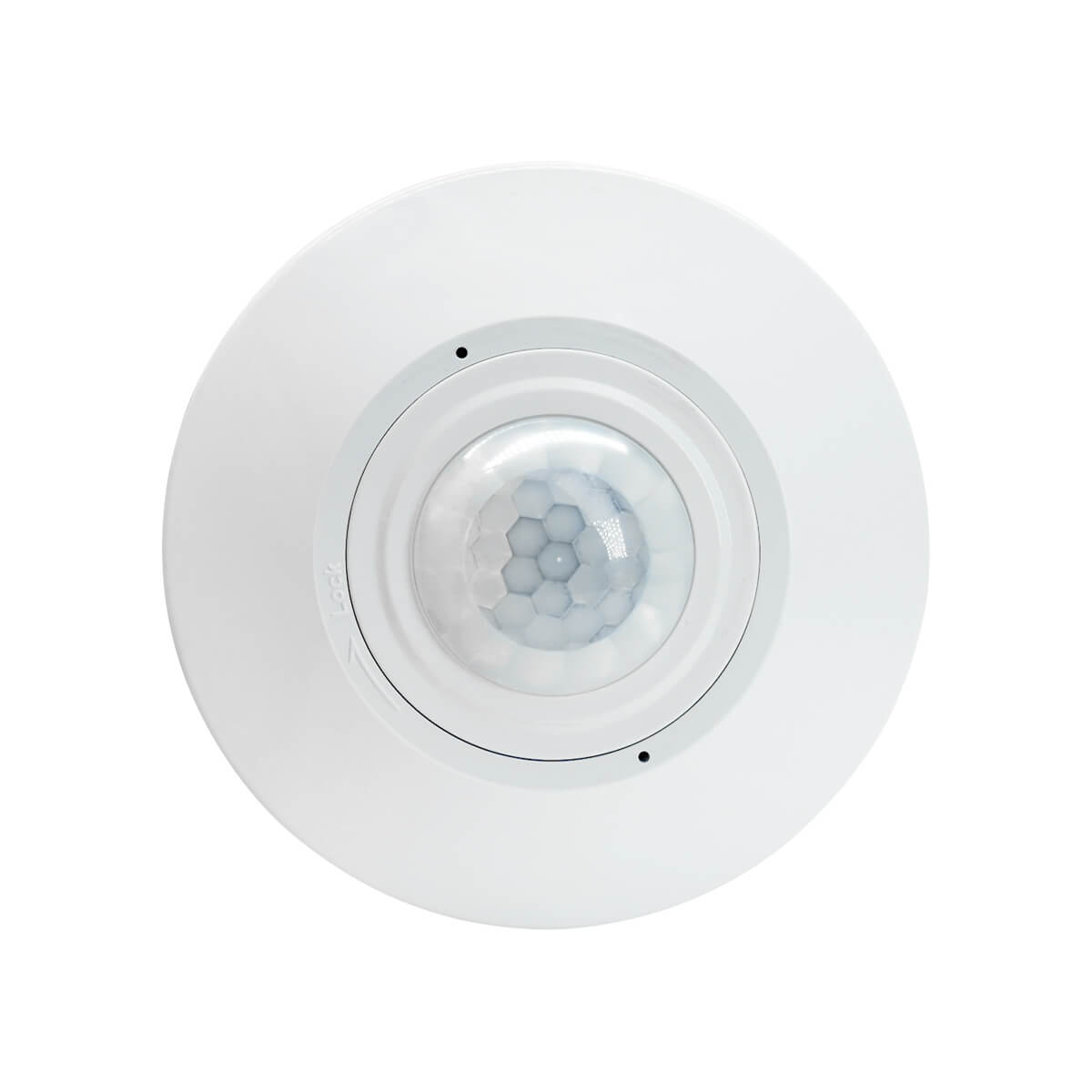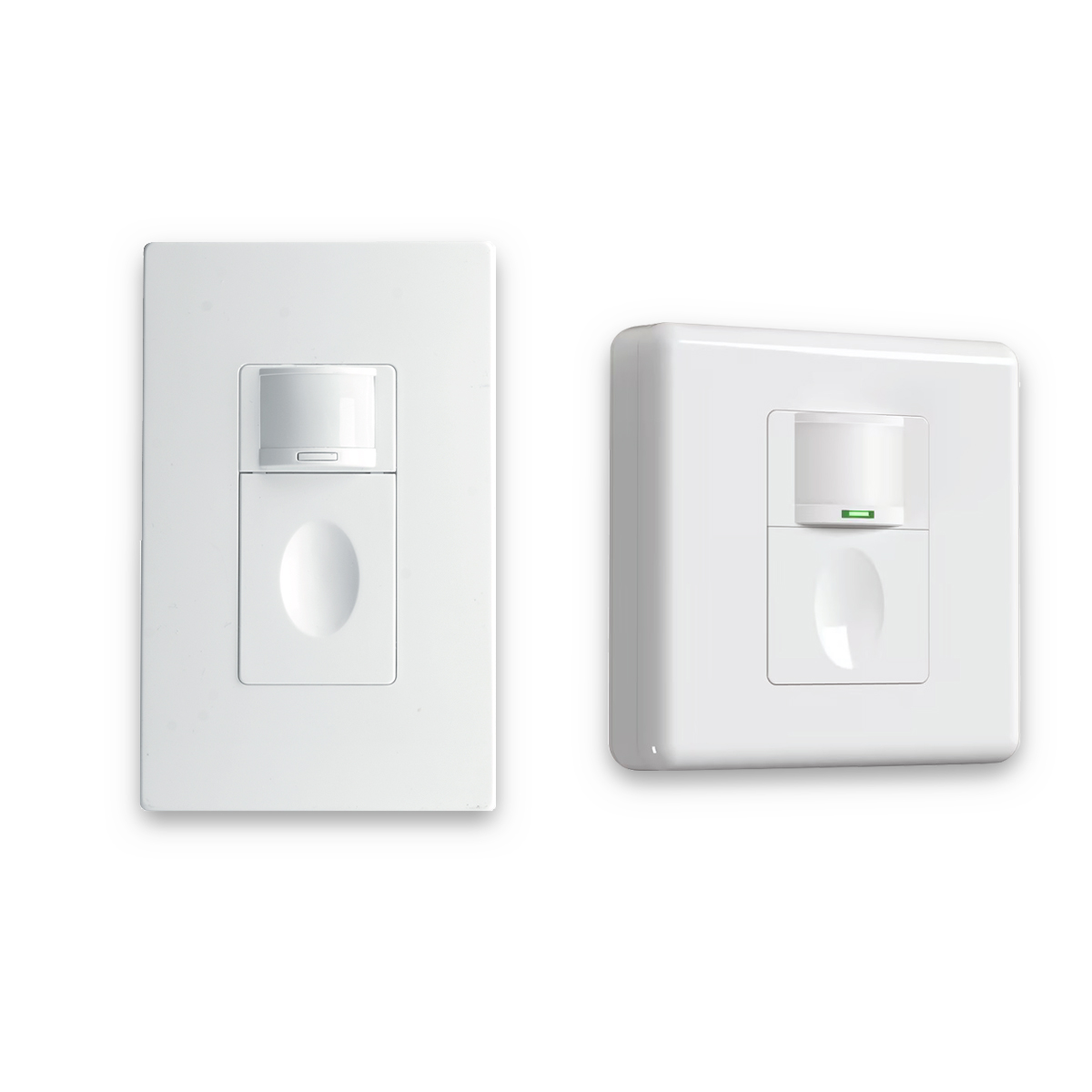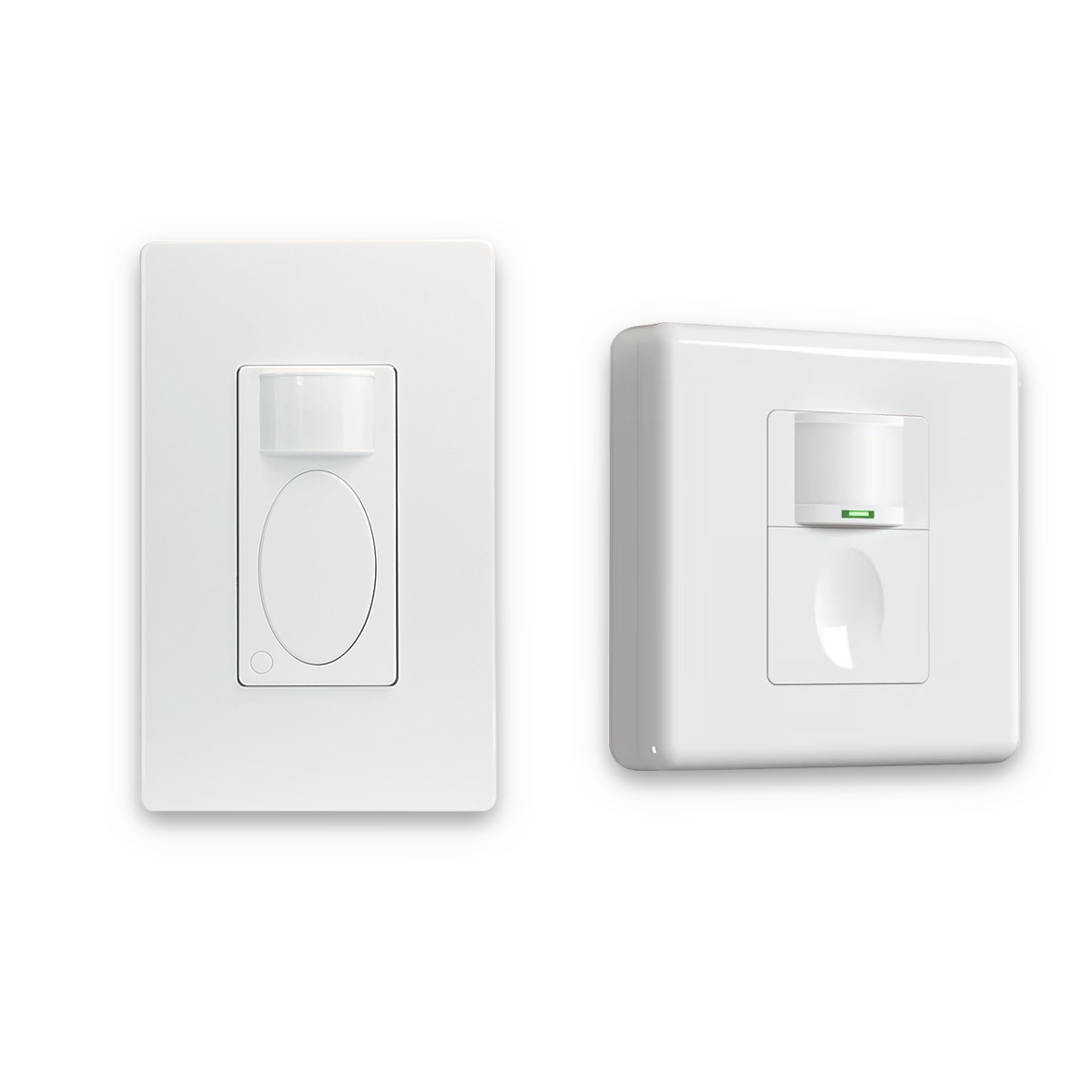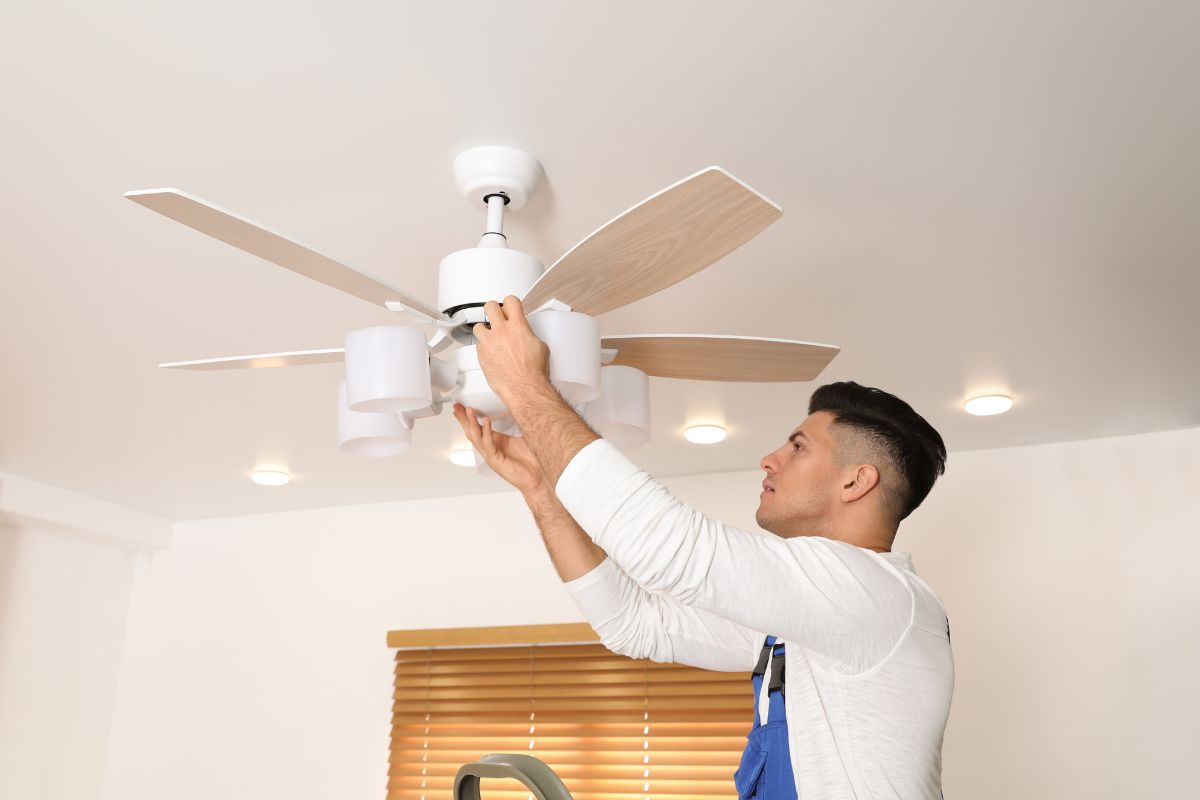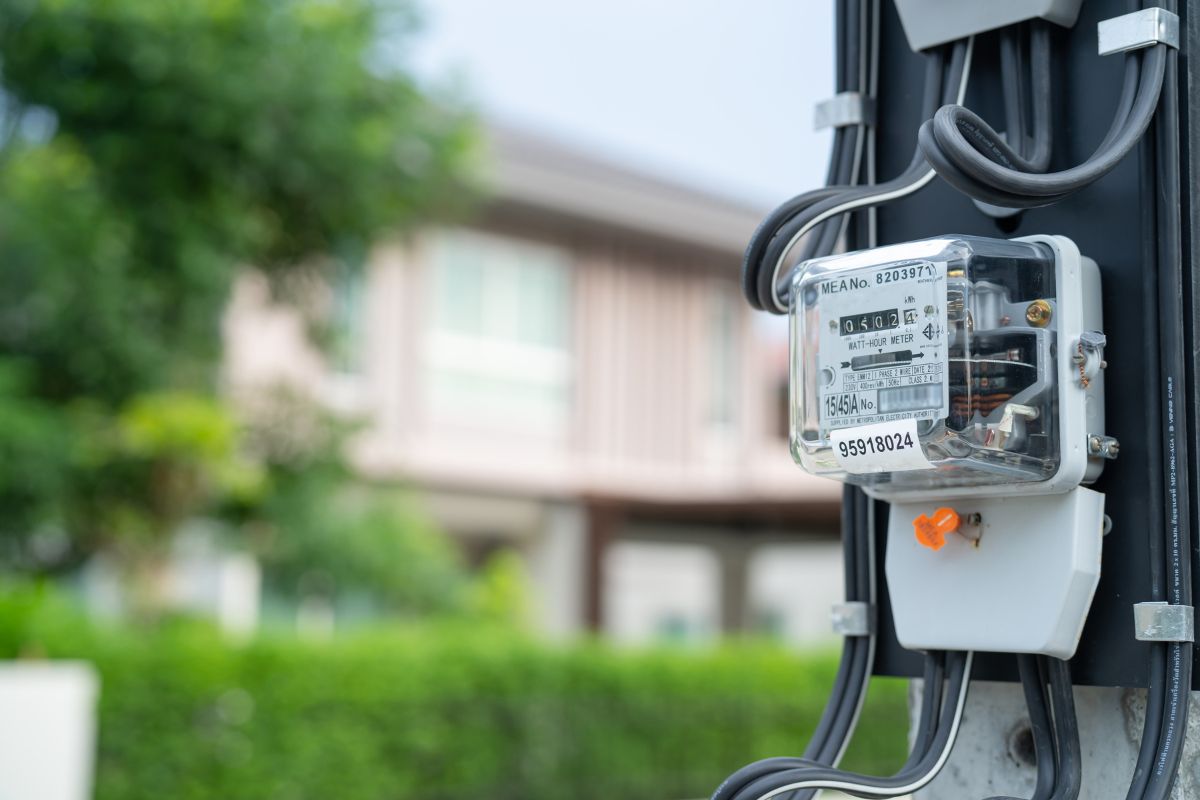Snímač pohybu je nezbytný pro úsporné osvětlení a bezpečnostní systémy, senzory aktivují připojená světla nebo kamery pouze v případě, že zaznamenají pohyb. Snímače pohybu lze použít jako samostatnou jednotku pro ovládání stávajícího světla nebo zabudovat do světel, spínače světel, fotoaparáty jako celek.
Obsah
- Co je to snímač pohybu?
- Jak funguje snímač pohybu?
- Aplikace snímačů pohybu
- Vnitřní světelný senzor pohybu
- Venkovní světlo s pohybovým senzorem
- Světelný spínač se snímačem pohybu
- Výhody snímače pohybu
- Jak daleko dokáže senzor pohybu detekovat?
- Kam instalovat snímače pohybu?
- Jak nainstalovat snímač pohybu?
- Jak zapojit světelný spínač s pohybovým senzorem
Tento průvodce senzory pohybu obsahuje vše, co potřebujete vědět o tom, co jsou to senzory pohybu, jak fungují a jaké jsou jejich aplikace, aby vám pomohl vybrat ty nejlepší senzory pohybu pro váš domov a firmu. Pojďme se do toho ponořit.
Co je to snímač pohybu?
Snímač pohybu nebo detektor pohybu je elektronické zařízení, které pomocí senzoru detekuje a měří pohyb osob nebo pohybujících se předmětů v blízkosti. Snímač pohybu může fungovat jako samostatný detektor pohybu, který ovládá alarm vašeho domu nebo systém inteligentního osvětlení prostřednictvím pevného kabelu nebo wifi, NEBO integrované do světel, vypínačů a kamer jako celek. Takže světla, kamery, které si koupíte, již mají funkci pohybového čidla zabudovanou, nemusíte k nim připojovat další pohybové čidlo, abyste je mohli ovládat.

Samostatné senzory pohybu lze propojit se systémem chytré domácnosti, stávajícími světly nebo telefony. Detekují pohyb a vysílají signál do připojeného systému. Např. alarm se snímačem pohybu nainstalovaný ve vašem domě vám prostřednictvím aplikace v telefonu pošle upozornění, aby vám připomněl, že se ve vašem domě vyskytl pohyb. Snímač pohybu připojený k systému inteligentního domácího osvětlení prostřednictvím wifi může ovládat celkové osvětlení.
Ve více případech jsou snímače pohybu pro větší pohodlí předem zabudovány do světel nebo kamer, takže je zákazníci mohou používat přímo. Například světlo s pohybovým čidlem je světlo, které se ovládá a aktivuje pomocí zabudovaného pohybového čidla. Světelný spínač s pohybovým čidlem je spínač světla, který se ovládá svým vestavěným pohybovým čidlem. senzorový spínač světla je také známý jako snímač přítomnosti.
Termín snímač pohybu se často používá nesprávně, protože se může vztahovat na součástku snímače pohybu, jako je například detektor pohybu, nebo na koncový výrobek. Senzor pohybu může být například použit pro označení jednotky PIR senzoru pohybu, spínače senzoru pohybu, popř. detektor pohybu různými lidmi.
Čtenáři by měli věnovat pozornost jeho skutečnému významu podle kontextu.
Jak funguje snímač pohybu?
Ne všechny snímače pohybu jsou vyráběny stejnou technologií pro stejné přístupy. Každý typ snímače pohybu má své výhody v přesnosti, spolehlivosti, dosahu detekce atd.
Podívejme se nejprve na technologii používanou v senzorech pohybu.
K detekci pohybů se obecně používá několik technologií: PIR, ultrazvuková, mikrovlnná, tomografická a duální technologie.
Bylo by užitečné, kdybyste pochopili, jak různé technologie fungují při detekci pohybu, abyste si mohli vybrat nejlepší senzor, který splňuje vaše požadavky.
Senzor pohybu PIR
Pasivní infračervený senzor, běžně známý jako PIR senzor, IR senzor, pasivní infračervený detektor, používá vícenásobnou čočku k detekci pohybu osob nebo pohybujících se předmětů měřením změn teploty.

Pasivní znamená, že senzor nevysílá energii pro detekci, ale pouze pasivně čeká a detekuje infračervené záření vyzařované pohybujícími se předměty nebo osobami nebo od nich odražené. Na rozdíl od aktivních senzorů, které musí pro detekci pohybu neustále vysílat signály, což spotřebovává velké množství elektrické energie, PIR senzory pohybu spotřebovávají méně energie. PIR senzory jsou velmi levné, odolné a vhodné pro dlouhodobé komerční aplikace.
Senzory PIR lze naprogramovat na nízkou nebo vysokou citlivost, aby ignorovaly malé změny teploty a dosáhly větší přesnosti a menšího počtu falešných detekcí.
Jak funguje senzor PIR?
Senzory pohybu PIR mají tenkou vrstvu pyroelektrického materiálu a dvě štěrbiny s materiály citlivými na infračervené záření. Když se lidé pohybují v blízkosti PIR snímače pohybu nebo kolem něj, snímač detekuje rozdíly infračerveného záření mezi oběma štěrbinami. Změna infračerveného záření nebo teploty je považována a zaznamenána jako pohyb nebo pohyb.

Zjednodušeně řečeno, senzory PIR detekují rychlé změny tepla vycházející z lidských těl. Všichni tvorové však vyzařují infračervené záření a zvířata, jako jsou psi, mohou být detekována jako pohyb člověka, což způsobí, že senzor vyvolá falešný poplach. Ve většině případů chceme, aby čidlo PIR reagovalo pouze na činnost člověka, nikoliv na rušivé zdroje hluku, jako jsou zvířata nebo horké kávovary. Rozsah detekce tepla čidla PIR je obvykle nastaven v blízkosti rozsahu lidského tepla, takže čidla PIR budou reagovat pouze na pohyby, které mají podobnou teplotu jako lidské činnosti.
Lidské tělo má teplotu kůže přibližně 34 stupňů a vyzařuje infračervené záření o vlnové délce 9 až 10 mikrometrů. Omezení citlivosti snímače pohybu na 8 až 12 mikrometrů může výrazně zlepšit přesnost.
Zde je příklad fungování světelného PIR senzoru pohybu, který vám pomůže porozumět:
Když se nikdo nenachází v blízkosti, senzor PIR detekuje. okolní infračervené záření z pozadí. Když přijde člověk, senzor porovná infračervené rozdíly mezi oběma štěrbinami, pozná nárůst tepla, zaznamená příchod člověka a rozsvítí světlo.
Když člověk odejde, druhý slot zaznamená pokles tepla, což znamená, že člověk opustil místnost, a vypne světlo.
Inspirujte se portfoliem pohybových senzorů Rayzeek.
Nenašli jste to, co jste chtěli? Nebojte se. Vždy existují alternativní způsoby řešení vašich problémů. Možná vám pomůže některé z našich portfolií.
Klady
Senzory pohybu PIR jsou velmi levné, snadno se používají a spotřebovávají málo energie. Navíc jsou PIR senzory neuvěřitelně odolné a spolehlivé, takže jsou nejideálnějším řešením pohybových senzorů pro dlouhodobé použití v interiéru.
Senzory PIR jsou vhodné pro prostory s vysokým prouděním vzduchu a zvukovým hlukem, kde ultrazvukové a mikrovlnné senzory nejsou v takových situacích kompatibilní. Vysoké proudění vzduchu je pro ultrazvukové snímače pohybu rušivým zvukovým šumem pro detekci skutečných pohybových aktivit, ale PIR snímače detekují pouze změny tepla a nejsou rušivé.
Pokud chcete sledovat a detekovat pohyb ve vybrané oblasti prostoru, je PIR senzor tou správnou volbou. Jeho detekční pokrytí můžete omezit zakrytím části čočky na senzoru pomocí odnímatelných lepicích pásků, protože senzory PIR potřebují "vidět" věci. Tímto způsobem můžete čidlo nastavit tak, aby detekovalo pouze danou oblast a bylo tak přesnější, aniž by detekovalo pohyb z nežádoucích oblastí, například pohyb mimo místnost.
Nevýhody
Protože čidla PIR musí přijímat a detekovat infračervené záření, takže čidla PIR vyžadují volnou viditelnost, je důležité umístit je tam, kde čočku nebudou blokovat překážky, jako jsou dveře a police. Senzory PIR jsou tedy nejvhodnější pro malé až středně velké uzavřené vnitřní prostory, kde může mít senzor volnou viditelnost.
Senzory PIR nejsou příliš citlivé na drobné změny pohybu, jako je psaní nebo otáčení stránek. Jsou citlivější na větší pohyby, jako je chůze lidí.
Senzory PIR by neměly být instalovány v blízkosti zdrojů tepla, kde by rychlé změny tepla mohly způsobit, že senzor detekuje falešné pohyby, například v blízkosti kávovarů a HAVC, které mohou způsobovat rychlé změny tepla.
Následující senzory jsou aktivní, což znamená, že aktivně vysílají signály pro detekci pohybu. Aktivní senzory by spotřebovaly mnohem více energie než senzory pasivní senzory PIR.
Mikrovlnný snímač pohybu
Mikrovlnný snímač pohybu vysílá elektromagnetické záření a přijímá odražené vlny. Posun frekvence je považován a zaznamenán jako pohybová aktivita. Mikrovlnné senzory jsou velmi citlivé a pro detekci pohybu musí neustále vysílat mikrovlny.

Vzhledem k tomu, jak funguje mikrovlnný snímač pohybu, lze citlivost změnit na méně nebo více citlivou změnou frekvence.
Klady
Mikrovlny mohou procházet stěnami a rohy, a proto mohou mikrovlnné senzory pokrýt jak vnitřní, tak i vnější velkou plochu, například venkovní parkoviště a vnitřní sklad.
Mikrovlnné senzory jsou vysoce konfigurovatelné, takže je lze nastavit jako méně nebo více citlivé pro detekci určitých typů činností, aby se snížila falešná detekce pohybu a zvýšila přesnost.
Vyspělejší mikrovlnné senzory mohou také zjistit, zda se osoba pohybuje směrem k němu, od něj nebo náhodně. Tyto detektory jsou užitečné při snímání a rozlišování mezi běžným pohybem a pohybem narušitele. Díky této vlastnosti jsou mikrovlnné snímače vysoce spolehlivé.
Nevýhody
Mikrovlnné snímače pohybu jsou sice levnější na pořízení, ale jejich používání je nákladné, protože neustále spotřebovávají velké množství energie vyzařované mikrovlnami.
Mikrovlnné senzory jsou extrémně citlivé a obvykle nejsou přesně nakonfigurovány, takže mohou způsobit mnoho falešných spuštění nebo falešných poplachů a jsou náchylnější k elektronickému rušení.
Mikrovlnné snímače pohybu pracují v určitých intervalech, aby se snížily náklady na elektrickou energii, místo aby neustále vysílaly a přijímaly signály. Proto jsou tyto mikrovlnné snímače často navrženy tak, aby cyklicky přecházely ze stavu ON & OFF, což může být zřejmý vzor, zejména při použití u bezpečnostních kamer.
Tomografický snímač pohybu
Tomografické senzory vysílají rádiové vlny a detekují, kdykoli jsou odražené vlny rušeny. Tomografické senzory se skládají z několika uzlů, které jsou vzájemně propojeny a tvoří síť typu mesh. Pohyb je zohledněn a zaznamenán, když je přerušeno spojení mezi dvěma uzly.

Tomografické snímače pohybu jsou velmi drahé a často se používají v komerčních prostorách, které vyžadují vysokou úroveň zabezpečení, jako jsou sklady a profesionální skladovací jednotky. Tomografické snímače mohou ve srovnání s ultrazvukovými a mikrovlnnými snímači pokrýt větší plochy a vidí i skrz zdi a objekty.
Ultrazvukový snímač pohybu
Existují pasivní a aktivní ultrazvukové snímače pohybu. Většina ultrazvukových snímačů pohybu na trhu jsou aktivní snímače. Nejprve se budeme zabývat pasivními ultrazvukovými snímači.
Pasivní ultrazvukové snímače pohybu detekují určité zvuky, například údery kovu nebo rozbíjení skla. Tyto zvuky vytvářejí zvukové vlny, které spadají do stanovených normálních parametrů, jež pasivní ultrazvukový senzor detekuje. Vzhledem k tomu, že senzor detekuje pouze přijaté zvukové vlny s předem nastavenými parametry, je u pasivních ultrazvukových senzorů vyšší pravděpodobnost vzniku falešných poplachů.
Vzhledem k tomu, že pasivní ultrazvukové snímače pohybu porovnávají zvukové signály pouze s vestavěnými parametry, je možné, aby zručné osoby pasivní snímač obešly, aniž by vydávaly detekovatelné zvuky. Pasivní snímače se často používají ve spojení se snímači PIR, aby se zvýšila celková citlivost.

Aktivní ultrazvukové senzory pohybu vysílají vysokofrekvenční zvukové vlny a detekují odražený signál, aby zjistily pohyby při hledání poruch zvukových vln. Zvukové vlny dopadají na objekty v dosahu detekce a nejsou rušeny, pokud nedojde k pohybu. Dojde-li k pohybu nebo pohybu, pak je zvuková vlna pohybem narušena a snímač může z odražených signálů zjistit rozdíly ve vlnách. Snímače mohou dále určit vzdálenost od cíle měřením doby mezi vysláním a přijetím signálu.
Na rozdíl od PIR senzoru pohybu, který dokáže detekovat na základě rozsahu lidské teploty, může ultrazvukový senzor pohybu spustit jakékoli pohybující se zvíře, předmět nebo člověk, což jej činí nevhodným pro mnoho aplikací.
Klady
Ultrazvukové snímače pohybu jsou nejvhodnější pro otevřené prostory a prostory s překážkami, kde nejsou vhodné snímače PIR.
Ultrazvukové snímače pohybu jsou velmi citlivé a lze je konfigurovat a kalibrovat pro větší přesnost detekce. Většinou se používají v interiérech, protože mohou detekovat mnoho venkovních zdrojů hluku, dokonce i kývající se větve nebo prolétávající ptáky.
Ultrazvukové senzory jsou citlivější na jemné pohyby, takže se skvěle hodí pro aplikace, kde je vyžadována vysoká úroveň citlivosti, jako jsou bezpečnostní systémy, automatická garážová vrata, otevřené kanceláře, toalety a uzavřená schodiště.
Ultrazvukové senzory se používají také v odpuzovačích zvířat. Lidé ultrazvukové zvuky neslyší, ale zvířata mohou tyto zvuky, které je zneklidňují a plaší, poslouchat.
Nevýhody
Protože aktivní ultrazvukové senzory musí vysílat zvukové vlny trvale, spotřebovávají velké množství elektrické energie a jsou velmi drahé.
Ultrazvukové senzory jsou příliš citlivé na to, aby se daly použít v místech s mnoha zdroji hluku, jako je například vysoké proudění vzduchu a venkovní aplikace.
Senzor pohybu Dual-Tech
Senzory pohybu s duální technologií nebo duální technologií využívají dvě různé technologie, které se kombinují, čímž se zvyšuje přesnost a výrazně snižuje počet falešných poplachů. Obvykle existují dva typy snímačů pohybu s duální technologií: PIR v kombinaci s mikrovlnnou technologií a PIR v kombinaci s ultrazvukovou technologií.
Pro aktivaci duálního snímače pohybu je nutné, aby obě technologie detekovaly pohyb současně, takže dojde k menšímu počtu falešných zapnutí. A senzor bude aktivován tak dlouho, dokud bude jedna z technologií nepřetržitě detekovat pohyb, aby se zabránilo falešným vypnutím.

Víme, že PIR senzor spotřebovává málo energie, zatímco mikrovlnný nebo ultrazvukový senzor spotřebovává hodně elektřiny. Aby byl tedy duální snímač pohybu energeticky účinný, mikrovlnný nebo ultrazvukový snímač se spustí až poté, co PIR snímač nejprve zjistí pohyb prostřednictvím změny teploty. Poté se aktivuje mikrovlnný nebo ultrazvukový snímač, aby vysílal singly a potvrdil, zda se jedná o skutečný pohyb.
To znamená, že rychlá změna teploty nespustí duální technologický senzor, protože nezpůsobí pohyb, který by spustil mikrovlnný nebo ultrazvukový senzor. Stejně tak pohyb objektu také nespustí senzor, protože nezpůsobí žádnou změnu tepla, která by mohla nejprve spustit PIR senzor.
Klady
Senzory pohybu s duální technologií jsou ideální pro aplikace, které vyžadují vysokou a přesnou citlivost, kde použití pouze jedné technologie není dostačující.
Jsou vhodné i pro velké prostory s omezeným výhledem. Mezi taková místa patří otevřené kanceláře, knihovny, společné prostory, učebny, konferenční místnosti a prostory, kde je požadován vyšší stupeň detekce.
Nevýhody
Senzory Dual-tech jsou poměrně drahé, a proto nejsou vhodné pro aplikace, na které není dostatečný rozpočet.
Vzhledem k tomu, že oba senzory musí detekovat pohyb současně, mohou zkušení zloději obejít obě technologie senzorů, aniž by byli přistiženi. Z tohoto důvodu někteří lidé používají dva snímače pohybu různých technologií samostatně namísto snímače pohybu se dvěma technologiemi, zejména v bezpečnostních systémech.
Aplikace snímačů pohybu
Zde je několik nejběžnějších a nejpoužívanějších aplikací snímačů pohybu. Pokud jste hledání snímače pohybu, je velmi pravděpodobné, že hledáte jeden z nich.
Vnitřní světelný senzor pohybu
Světla s pohybovým senzorem jsou mezi majiteli domů oblíbená, vnitřní senzorová světla se snadno instalují a jsou uživatelsky přívětivá. Každý domácí kutil může umístit světlo se senzorem pohybu u sebe doma, a to téměř všude.
Pokud máte potíže s instalací světel bez správného zapojení, můžete využít mnoho světla se senzorem pohybu na baterie lze přilepit přímo na stěnu bez nutnosti náročné ruční práce.
Senzor pohybu pod skříňovým světlem
Jak už název napovídá, podskříňková svítidla jsou instalované pod skříněmi k osvětlení míst, která běžná světla nemohou pokrýt. Tato světla můžete instalovat téměř všude, například do šatní skříně, pod kuchyňskou linku, koupelnovou linku, pod schody, do botníku nebo do jakéhokoli tmavého koutu v domě.

Světla pod skříňku jsou obvykle vybavena vestavěným magnetem, uživatelé mohou světla snadno připevnit přímo na jakýkoli železný povrch. Ke světlům se dodává také lepicí páska a železná fólie, pomocí dodaných oboustranných pásek můžete nejprve připevnit železnou fólii na dřevěný a plastový povrch a poté k ní připevnit skříňové světlo. Jsou napájena bateriemi a dobíjecí, takže uživatelé se nemusí starat o zapojení.
Majitelé domů si oblíbili světla s čidlem pohybu pod skříňkou, protože se snadno instalují, používají a lze je nainstalovat kdekoli v domě. Bez snímače pohybu by bylo skříňové světlo s přepínačem zcela bezvýznamné a zbytečné. Obrázek: Pokud nainstalujete světlo pod schody, kuchyňskou skříňku nebo šatní skříň, chcete pokaždé světlo zapínat a vypínat ručně?
Noční světlo se snímačem pohybu
V porovnání s běžným nočním světlem, které se aktivuje pouze za tmy, posouvá senzor pohybu noční světlo na vyšší úroveň. Noční světlo se snímačem pohybu může zůstat ve tmě vypnuté a aktivovat se pouze tehdy, když zjistí pohyb v blízkosti, čímž se ušetří více energie. Často se mu říká automatický režim.
Na trhu jsou dva druhy nočních světel se snímačem pohybu: noční světlo do zásuvky a noční světlo na libovolné místo.

Zásuvné noční světlo se snímačem pohybu lze zapojit přímo do zásuvky střídavého proudu bez pevného zapojení nebo baterie. Jejich použití je poměrně snadné.
Pokud nemáte v místě, kam chcete noční světlo umístit, k dispozici zásuvku, můžete místo ní použít noční světlo na lepení. Jsou napájena bateriemi a lze je nainstalovat kamkoli pomocí oboustranných pásků.
Světelný senzor pohybu
Pokud chcete plně automatické světlo, můžete použít světlo se snímačem pohybu, zejména stropní.
Na trhu jsou světla se senzorem pohybu s pevným připojením a s možností nalepení na libovolné místo.
Drátová světla s pohybovým senzorem jsou méně oblíbené, protože je jednodušší použít k přímému ovládání světla spínač se snímačem pohybu. Ale pro místa, která mají pouze jednu zásuvkovou skříňku, do které nelze nainstalovat jak svítidla a nezávislý pohybový senzor současně, zejména na stropě, může váš problém vyřešit světlo s pohybovým senzorem.
Možná máte zájem o
Je obtížné ovládat nebo konfigurovat režim pevně připojeného světla s pohybovým senzorem, které již bylo nainstalováno na stropě nebo na stěně, takže pevně připojená světla s pohybovým senzorem se někdy dodávají s dálkovým ovládáním.
Světla s čidlem pohybu, která se dají přilepit na libovolné místo, jsou oblíbenější pro svou snadnou instalaci, ale pokud jsou instalována na místech s častou návštěvností, je třeba je neustále dobíjet nebo měnit baterie.
Žárovka se snímačem pohybu
Pokud máte pouze žárovka a není kam přidat další snímač pohybu, můžete také ušetřit energii pomocí žárovky se snímačem pohybu.

Díky PIR senzoru pohybu, který je připevněn na špičce žárovky, může žárovka s pohybovým senzorem zajistit automatické zapnutí, automatické vypnutí a automatické vypnutí. funkce od soumraku do úsvitu.
Funkce soumraku do svítání může zabránit aktivaci žárovky ve dne a může být aktivována pouze ve tmě při méně než 15LUX.
Světelný pásek se snímačem pohybu

Mnoho moderních majitelů domů dává přednost světelné pásky se snímačem pohybu k výzdobě svých domovů, zejména na schodech nebo pod postelí.
Senzor pohybu domácích zvířat
Majitelé nemohou mít domácí mazlíčky neustále na očích. Pomocí pohybových čidel můžeme domácí zvířata držet dál od nežádoucích míst, jako jsou například místa vedle odpadkového koše, pracovní desky nebo v blízkosti místností, a zabránit tak zvědavým domácím mazlíčkům v přístupu do určitých částí vašeho domova.
Například sprej s čidlem pohybu pro domácí zvířata může uvolnit rychlou dávku spreje, aby se domácí mazlíčci drželi stranou. Lze je instalovat v blízkosti odpadkového koše, takže se nemusíte obávat, že by psi a kočky vyhrabávali odpadky. Existují také detektory s čidlem pohybu pro domácí zvířata, které jsou navrženy tak, aby vydávaly varovné hlasy, které domácí zvířata udrží mimo dosah.
Venkovní světlo s pohybovým senzorem
Aby bylo světlo se senzorem pohybu vhodné pro venkovní použití, musí výrobci věnovat větší pozornost odolnosti proti vodě a větru. Venkovní světla se senzorem pohybu musí být odolnější a spolehlivější.
Reflektor se snímačem pohybu
Venkovní světlomety s pohybovým senzorem jsou většinou vyrobeny z kovu, aby byly co nejodolnější a měly stupeň krytí IP65, takže odolávají povětrnostním vlivům, UV záření, korozi a erozi.

Senzory pohybu jsou běžně přidávanou funkcí pro světlomety, která může zvýšit úsporu energie a zlepšit životnost svítidel. Nemá smysl, aby byl reflektor aktivní po celou noc, což způsobuje plýtvání energií a způsobuje světelné znečištění. S funkcí detekce pohybu, světla s pohybovým senzorem se většinou používají také jako venkovní bezpečnostní osvětlení.
Bezpečnostní světlo s pohybovým senzorem dokáže rozpoznat pohybující se lidi, auta nebo zvířata až do vzdálenosti 72 stop při úhlu detekce 180°, což přináší do vašeho domova větší bezpečí. Mohou vám osvětlit cestu, když se vracíte domů za tmy, a také odradit potenciální vetřelce.
Snímač pohybu Solární světlo
Pokud nemáte k dispozici kabeláž pro instalaci zaplavující světlo, můžete místo toho zkusit použít solární světlo se snímačem pohybu a dosáhnout stejných výsledků.

Díky senzoru pohybu nemusí být solární světlo zapnuté celou noc, což zajišťuje mnohem delší dobu používání. Protože solární světla nevyžadují kabeláž, lze je snadno nainstalovat kamkoli potřebujete.
Světelný spínač se snímačem pohybu
Světelný spínač se snímačem pohybu může automaticky ovládat zapnutí a vypnutí světla, když vestavěný snímač zaznamená pohyb nebo pohyb. Stejně jako knoflíkový spínač má i světelný spínač s pohybovým čidlem tlačítko, kterým mohou lidé ručně zapnout/vypnout světlo a obejít tak detekci pohybu. Když například senzor falešně detekuje pohyb a zapne světlo, můžete jej ručně vypnout, stejně jako při použití běžného vypínače.
Spínače s pohybovým čidlem lze použít pro světla, ventilátory nebo systémy HAVC, pokud splňují požadavky na proud a napětí. Spínač se snímačem pohybu se však nejčastěji používá k ovládání světel. Světelné spínače s pohybovým čidlem se také nazývají čidla přítomnosti nebo volného prostoru při použití pro automatické řízení vnitřního osvětlení.

Pokud je spínač světla s pohybovým senzorem nastaven tak, aby automaticky rozsvítil světlo, když jsou v místnosti lidé, a zhasl, když je místnost prázdná, nazývá se spínač světla s pohybovým senzorem také spínač s pohybovým senzorem. snímač přítomnosti pro svou funkci zjišťování, zda je místnost obsazena.
Pokud je spínač světla se snímačem pohybu nastaven tak, že uživatelé musí nejprve ručně zapnout spínač světla a poté může spínač světla se snímačem automaticky vypnout světlo, když je místnost prázdná, pak se spínač světla se snímačem pohybu nazývá spínač světla se snímačem pohybu. snímač volných míst, pro jeho schopnost zjistit, zda je prostor volný.
Chcete-li se dozvědět více o informace o světelných spínačích se snímačem pohybu, přečtěte si našeho podrobného průvodce zde.
Výhody snímače pohybu
Pojďme si rozebrat některé výhody, které by vám mohly uniknout, proč byste měli používat snímač pohybu.
Zlepšení zabezpečení
Není třeba dodávat, že když většina lidí přemýšlí o snímačích pohybu, nejprve je napadne. bezpečnostní kamery se snímačem pohybu a scény se senzorem pohybu, stejně jako jsme viděli ve skutečném životě a ve filmu.
Senzory pohybu jsou skvělé pro detekci zlodějů, vloupání a potenciálních hrozeb. Kamery a alarmy se snímači pohybu patří mezi nejpotřebnější bezpečnostní systémy v komerčních budovách a najdete je téměř v každé velké budově. Jsou natolik oblíbené, že i majitelé domů mají dnes tendenci instalovat kamery a alarmy do svých domovů. Nejsou nijak drahé a mohou výrazně pomoci zvýšit úroveň zabezpečení vašeho domova.

Senzory pohybu mohou navíc zlepšit i zabezpečení interiéru.
Dostatek světla v kancelářích může významně zabránit případným krádežím. Krádeže a vloupání by se při dostatečném osvětlení stávaly mnohem méně často. Se světlem s pohybovým čidlem by zloděj mohl mít pocit, že se nechá spatřit, když zjistí, že je pro něj osvětlení zapnuté. Mohou se také domnívat, že se v okolí nacházejí další lidé, a tak mohou od trestného činu upustit.
Pro majitele domů jsou určeny snímače pohybu, jako např. noční světla a snímače přítomnosti v koupelně mohou zabránit tomu, aby lidé, kteří chodí potmě, náhodou nespadli ze schodů nebo nehledali vypínač světla mokrýma rukama, které by mohly dostat elektrický šok.
Úspora energie a elektřiny
Pomocí pohybových čidel se světla a kamery aktivují pouze při detekci pohybu, což může ušetřit velké množství energie a vaše účty za elektřinu.
Plýtvání energií z osvětlení je jedním z hlavních zdrojů plýtvání energií na světě. Možná tomu nebudete věřit, ale podívejte se na statistiky a údaje zde.
Podle americké Agentury pro ochranu životního prostředí lze použitím automatického vypínání, plánovaného vypínání, jako jsou snímače přítomnosti (spínače se snímačem pohybu), ušetřit energii v rozmezí 40% až 46% v učebnách, 13% až 50% v soukromých kancelářích, 30% až 90% na toaletách, 22% až 65% v konferenčních místnostech, 30% až 80% na chodbách a 45% až 80% ve skladovacích prostorách.
Podle Lawrence Berkeley National Laboratory mohou strategie založené na obsazenosti budov přinést průměrné úspory energie na osvětlení ve výši 24%.
Senzory přítomnosti a volného prostoru mohou v průměru ušetřit 30% až 60% energie na osvětlení v obytných a komerčních aplikacích, některé dokonce až 80% energie.
Jednat a začít používat systém osvětlení s pohybovým senzorem pro vaši domácnost, a to buď spínač světla s pohybovým senzorem, nebo světla se snímačem pohybu.
Prodloužení životnosti světel
Možná jste si nevšimli, že životnost světel a kamer se může díky pohybovému čidlu o hodně prodloužit. Díky delší životnosti může vaše světlo fungovat mnohem déle, což může jiným způsobem snížit náklady na údržbu.
Například u venkovního světelného snímače pohybu, pokud jej používáte 3 hodiny denně, může být životnost až 30 000 hodin, což je více než 25 let. U pohybového čidla ho většinou nebudete používat ani 3 hodiny, možná 0 hodin denně, pokud nebude detekován žádný pohyb.
Pohodlí
Obrázek pohodlí světla se senzorem pohybu vám může přinést, když jdete do prádelny s plnýma rukama nebo se vracíte z Walmartu s nákladem výrobků na ruce, zejména v noci. S běžným vypínačem musíte nejprve jít vypínač ve tmě hledat, zapnout ho, vrátit se pro věci, manipulovat s nimi a ještě se musíte vrátit a vypnout světlo.

Pokud použijete světlo s pohybovým čidlem nebo nainstalujete vypínač s pohybovým čidlem, světlo se rozsvítí za vás a vypne, když opustíte prádelnu nebo garáž. Nikdy nebudete muset chodit pro kruhy, pouze pro osvětlení. Pomocí pohybových čidel se vše stane inteligentním a automatickým.
Jak daleko dokáže senzor pohybu detekovat?
Snímač pohybu PIR obvykle detekuje pohyby až do vzdálenosti 40 stop. Ultrazvukové senzory mohou detekovat pohyb až do vzdálenosti 50 stop.
Senzory PIR mají omezenou citlivost na drobný pohyb ve vzdálenosti větší než 15 stop, zatímco ultrazvukové senzory ve vzdálenosti 25 stop.
Pokud chtějí uživatelé dosáhnout co nejlepšího detekčního výkonu a přesnosti, měli by věnovat pozornost nejlepšímu dosahu.
Snímače pohybu různých výrobců se sice mohou lišit rozsahem vzdálenosti, ale obvykle spadají do tohoto rozsahu.
Pokud chcete pokrýt velký detekční rozsah, můžete nainstalovat více senzorů na různých místech nebo je propojit do sítě.
Kam instalovat snímače pohybu?
Chcete-li dosáhnout co nejlepšího detekčního výkonu, měli byste věnovat pozornost tomu, kam správně nainstalovat snímače pohybu. Umístěte čidlo tam, kde může mít co největší a nejpřímější pokrytí dané oblasti, a ujistěte se, že na čidla nedopadají žádné zdroje hluku, které by mohly způsobit falešné poplachy.
Hledáte řešení úspory energie aktivované pohybem?
Obraťte se na nás pro kompletní PIR senzory pohybu, produkty pro úsporu energie aktivované pohybem, spínače se senzorem pohybu a komerční řešení pro detekci přítomnosti/volnosti.

U PIR pohybového čidla se ujistěte, že čidlo má volný výhled bez překážek, protože PIR pohybové čidlo musí "vidět" cílové oblasti. PIR snímače pohybu musí detekovat infračervené záření a infračervené záření nemůže procházet překážkami.
Pro dosažení nejlepšího výsledku by měly být instalovány ve správné výšce. Nejlepší umístění pro pohyb je obvykle v rohu místnosti, daleko od oken. Zařízení by mělo být umístěno asi 6 až 8 stop nad zemí.
Mezi nejlepší místa pro instalaci snímače pohybu patří:
Rohy
Do rohu každé místnosti umístěte snímač pohybu, který směřuje ke dveřím. Nikdo nebude moci vstoupit, aniž by se spustil alarm.
V blízkosti cenností
Umístěte snímače pohybu do blízkosti nejdůležitějších věcí. Nikdo se k nim nebude moci přiblížit bez vašeho svolení.
V blízkosti ložnic
I když se domníváte, že zloděj se do vašeho domu nedostane přes druhé patro, je dobré nastavit pohybové čidlo v blízkosti postelí. Pokud se k vám někdo přiblíží, zatímco spíte, budete na to upozorněni.
Suterén
Umístění pohybových čidel ve sklepě je skvělý nápad. Pokud máte hodně nepořádku a překážek, ujistěte se, že čidlo nebude blokováno.
Na stropech
Vetřelec může detektory pohybu vyhledávat již při vstupu do domu. Strop je vynikajícím místem, které by je nenapadlo hledat jako první.
Mezi dekoracemi
Senzory pohybu ukryjte do interiéru, aby si jich vetřelci nemohli snadno všimnout.
Mezi nejhorší místa pro instalaci snímače pohybu patří:
Instalováno v blízkosti systému Windows
Senzory pohybu PIR mohou být zmateny přímé sluneční světlo nebo změny tepla zvenčí. Ultrazvukové senzory mohou detekovat zvuky zvenčí okna, nikoliv z místnosti.
V blízkosti zdrojů tepla
Senzory pohybu PIR a jejich aplikace se mohou spouštět v blízkosti zdrojů tepla. Vzhledem k tomu, že většina světelných senzorů využívá technologii PIR, měli byste být opatrní a snažit se vyhnout umístění výrobků založených na senzorech PIR v blízkosti zdrojů tepla. Používejte raději ultrazvukové senzory.
Jak nainstalovat snímač pohybu?
Senzory pohybu se snadno instalují, ne jinak než instalace normálního světla nebo vypínače.
Instalace světla se snímačem pohybu je stejná jako instalace běžného světla, protože snímač pohybu je integrován uvnitř. Můžete zapojit podle návodu a připojit zatěžovací vodič, nulový vodič a zemnicí vodič jako u běžného světla.
Pokud potřebujete nainstalovat samostatný detektor pohybu nebo spínač světla s pohybovým senzorem pro ovládání stávajícího světla, je to také snadné. Představte si čidlo pohybu jako běžný vypínač světla. Snímač pohybu bude řídit, zda má být do světla vyveden výkon. Pokud snímač pohybu zaznamená pohyb, bude do světla vysílat proud, aby se rozsvítilo. Pokud pohyb nezaznamená, nevydá napájení do osvětlení, a světlo tak zůstane vypnuté.
Chcete-li nainstalovat snímač pohybu, jednoduše postupujte podle návodu k obsluze a připojte zátěžový vodič, nulový vodič a zemnicí vodič, to je vše.
Zde je příklad zapojení spínače světla s pohybovým čidlem.
Jak zapojit světelný spínač s pohybovým senzorem
Instalace pohybového čidla je snadná, nemusíte volat elektrikáře. Každý majitel domu zvládne instalaci svépomocí, výměna a zapojení světelného spínače se snímačem pohybu i bez základních znalostí elektrotechniky.

Stačí vám k tomu šroubovák a vše zvládnete za méně než 30 minut. Možná budete potřebovat také nůžky na stříhání drátů, pokud jsou příliš dlouhé, a spojky nebo elektrické pásky na propojení drátů, pokud nejsou k dispozici. Většinou je však nebudete potřebovat. Budou dodány spolu s novým senzorovým spínačem, který jste zakoupili.
Podobně by se postupovalo, kdybyste potřebovali instalace snímače pohybu, světlo, nebo fotoaparát. Postupujte podle následujících kroků.
Krok 1: Vypněte napájení
Vypněte jistič skříně, do které chcete zapojit zařízení. instalace přepínače. Alespoň několikrát vyzkoušejte, zda je napájení vypnuté.
Sundejte krycí desku starého vypínače a pomocí šroubováku vyjměte vypínač ze skříňky ve zdi.
Krok 2: Odstranění stávajícího vypínače světel
Před demontáží stávajícího vypínače se podívejte na stávající elektroinstalaci a raději si ji vyfoťte. Zapojení spínače světla s pohybovým čidlem by se nijak nelišilo od běžného spínače světla. Zapojení můžete zkopírovat a použít na nový spínač světla s pohybovým senzorem.
Krok 3: Instalace a zapojení světelného spínače s pohybovým čidlem
Představte si spínač světla s pohybovým senzorem takto: senzorový spínač se skládá z běžného spínače a senzorové jednotky, která řídí zapnutí a vypnutí. Aby senzorová součástka fungovala samostatně i při vypnutém vypínači světla, je zapotřebí další kompletní okruh pro napájení samotného senzoru.
Zapojení spínače světla se snímačem pohybu je podobné jako u vašeho stávajícího spínače světla, pouze je třeba připojit několik dalších vodičů pro napájení senzorové jednotky.
Nejprve si přečtěte návod k instalaci světelného spínače se snímačem pohybu a začněte zapojovat.
Připojte zátěžový vodič (černý) k zátěžovému vodiči, vodič vedení (červený) k vodiči vedení, nulový vodič (bílý) nebo zemnicí vodič (holá měď) k vypínači světla podle instalační příručky.
Některé světelné spínače se senzorem pohybu mají čtyři vodiče, jiné tři. To proto, že některé senzorové spínače vyžadují ke své funkci nulový vodič, ale některé nulový vodič nepotřebují. Říká se tomu senzor vyžadující nulový vodič a senzor vyžadující zemnící vodič. Nepropadejte panice, pokud zjistíte, že vodiče nejsou kompatibilní s vaší nástěnnou skříňkou.
Zapněte jistič a vyzkoušejte vypínač, zda správně detekuje pohyb.
Krok 4. Upevnění přepínače
Spínač částečně zašroubujte do wallbox, poté zapněte napájení a několikrát otestujte snímače.
Pokud vše funguje, zpevněte všechny šrouby a zakryjte desku, případně vypněte napájení.

